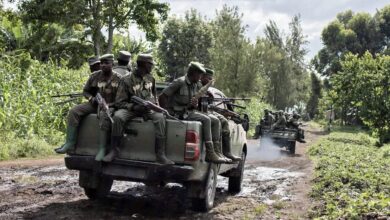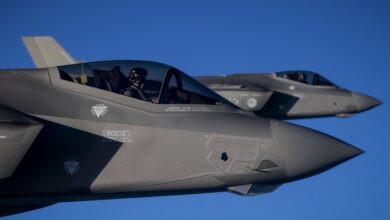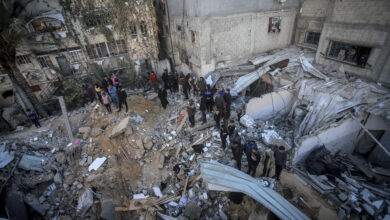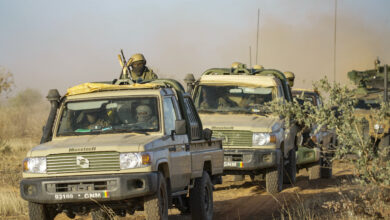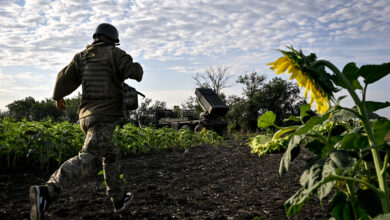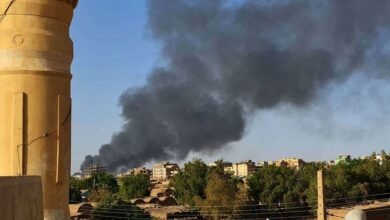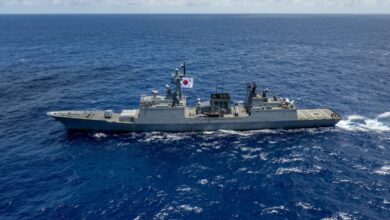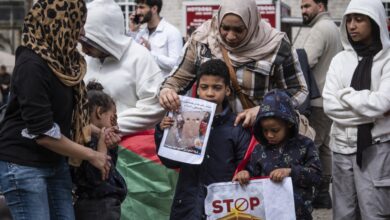The prime minister of Central African Republic led a rally of around 3,000 people on Monday, January 28 calling for a global arms embargo to be lifted ahead of a United Nations meeting later this week.
The mineral-rich country, wracked by ethnic and religious conflict since 2013, has been subject to a U.N. Security Council arms and ammunition embargo for the past five years.
#Centrafrique: Des milieux des centrafricains étaient descendus ce matin du 28 janvier pour exiger la levée totale de l'embargo qui empêche les forces armées centrafricaines. les manifestants ont remis un mémorandum au 1er ministre Simplice Mathieu Sarandji. #RadioNdekeluka pic.twitter.com/Pv35zLsgxM
— Inès Laure (@inesngopot) January 28, 2019
Speaking on a podium in Bangui’s central Place des Martyrs, Prime Minister Mathieu Simplice Sarandji said: “This is a lock that deserves to be opened, this is an embargo which strikes our defense and security forces.”
“The government respects the embargo while armed groups receive weapons. The people of Central African Republic can not understand this law of double standards,” he said to cheers from the crowds in the capital.
Sarandji said he would present a memo on the embargo to the U.N. Security Council, China, Equatorial Guinea, France, Russia and the United States, Radio Ndeke Luka reported.
The U.N. Security Council will on Thursday decide whether to renew the embargo, which bans weapon supplies to the country unless approved by a U.N. sanctions committee.
The authorities in Bangui have repeatedly called on the U.N. to lift the embargo. President Faustin-Archange Touadera reiterated a regular call for “the total lifting of the arms embargo that still weighs on our national army” in an address to the annual U.N. General Assembly in late September.
Parfait Onanga-Anyanga, the U.N. special envoy to the CAR, later said that the need for weapons was “undeniable” as the Central African Republic government builds its armed forces, but urged transparency in the flow of arms.
The sanctions are aimed at ensuring imported weapons do not end up in the hands of militias in the corruption-prone country.
The committee has previously approved shipments of weapons from France and Russia but Chinese weapons deliveries have been blocked. In December, France handed over 1,400 AK-47 assault rifles and three amphibious vehicles to the Central African Republic to shore up its beleaguered armed forces, and in 2017, the embargo was lifted to allow delivery of 1,700 Russian weapons for FACa.
Russia’s Ambassador to CAR Sergey Lebanov said on September 17 that a second shipment of Russian arms and ammunition was “in preparation,” and would be delivered once approved by the Security Council.
France, Belgium, China and the U.S. have all recently supplied equipment for CAR’s military, but that equipment is understood not to include weaponry.
In June, France, the U.S. and the United Kingdom put a hold on a request from Central African Republic for U.N. Security Council approval of weapons shipments from China.
A U.N. report last year said “the recent acquisition of arms by the government has prompted factions” of militias to rearm.
Several protesters on Monday blamed U.N. Security Council member France for maintaining the embargo.
“We have soldiers who no longer work because of the embargo. It’s because of France,” said demonstrator Pierre.
“Only the army can ensure the security of CAR. We want Central African Republic to regain its sovereignty, we want the total lifting of the embargo,” said another protester, Fiacre.
“From France’s point of view, there is in principle no obstacle to ending the embargo” permanently, French defense minister Florence Parly said in December. “What is important is that these weapons, after they are delivered to the Central African armed forces, can be identified, stored and traced.”
Peace talks
The demonstration came as peace talks between the government and 14 militia groups under the auspices of the African Union continue in Sudan’s capital Khartoum.
The African Initiative for Peace and Reconciliation in the Central African Republic Inter-Central African Dialogue between Government and Armed Groups began on January 24 after 18 months of exploratory work.
It is the the eighth bid in six years to agree a lasting peace. The last attempt, in 2017, was forged with the help of the Catholic Church, but fighting resumed within a day, leaving 100 dead.
The Central African Republic Government @GouvCF and armed groups continue to engage in frank, cordial and constructive discussions on the future of their nation. They ALL agree on the imperative of #peace and the need to rebuild together. #AfricanInitiative #CAR pic.twitter.com/EUM9VR9zep
— Amb. Smail Chergui (@AU_Chergui) January 28, 2019
Humanitarian organizations have stressed the importance of the talks for CAR’s population. Violence since 2012 led to thousands of deaths. Nearly 700,000 people are displaced, 570,000 have fled the country and 2.9 million – 63 percent of the population – are in need of humanitarian aid, according to the U.N.

Bambari violence
Tension around the town of Bambari remains high after a fortnight of significant security incidents.
Union for Peace in the Central African Republic (UPC) ex-Seleka militants allegedly killed two people on January 26 in Yamalet village around 30 km from Bambari, Radio Ndeke Luka reported.
The rebels were reportedly moving away from Bambari after serious clashes with troops deployed by the U.N. mission, Minusca.
In Khartoum, ex-Seleka spokesperson Abakar Sabone accused peacekeepers of killing seven Muslim civilians, including women and children on the night of January 23-24, RFI reported.
Minusca spokesperson Vladimir Monteiro told The Defense Post on January 27 that “25 armed elements were spotted in three houses at around 1930hrs” in the Bornou neighborhood. Minusca intervened and the area was cleared.
The following day “at around 0820 hours, approximately 100 civilian demonstrators reportedly forced by UPC elements” marched from the Central Mosque to the Minusca camp and “placed three deceased civilians in front of the Mission HQ.”
“Apparently, stray bullets fired by UPC caused the death of three civilians including a young girl, a child and a man,” Monteiro said, adding that the number of militia casualties was unknown and there were no casualties among the peacekeepers.
“As of today, there are no indications that peacekeepers have killed innocent people,” Monteiro said.
Portuguese troops were among the forces deployed on January 10 in Bambari by Minusca to protect civilians and restore order after UPC militants killed two police officers ahead of a scheduled visit by the country’s president.
The following day, two French Mirage 2000 multirole jets completed two ‘show of force’ demonstrations over Bambari.
Sporadic clashes have been reported since. Radio Ndeke Luka reported that Portuguese and Nepalese peacekeepers launched an hours-long assault against UPC militants in Bambari on January 17 after several days of relative calm.
Monteiro told The Defense Post that peacekeepers “engaged UPC elements in two Bambari neighborhoods” on January 17.
Radio Ndeke Luka reported that a humanitarian worker and a teacher were killed in Bambari on January 19.
Despite reserves of diamonds, gold, uranium, copper and iron, Central African Republic remains one of the world’s poorest countries.
Fighting broke out between the Seleka, a coalition of mainly Muslim rebel groups, and the mainly Christian anti-balaka militia in 2012. A peace deal was singed in January 2013, but Seleka rebels captured the capital Bangui that March and ousted President Francois Bozize.
Seleka was officially disbanded within months, but many fighters refused to disarm, becoming known as ex-Seleka. Many others joined the anti-balaka militia to fight the Seleka, leading to a spiral of violence between groups along religious and ethnic lines.
By the end of 2014, CAR was de facto partitioned – anti-balaka in the southwest and ex-Seleka in the northeast.
Elected in 2016, President Faustin-Archange Touadera’s weak government controls around a fifth of the country and relies heavily on the U.N. peacekeeping mission, Minusca, for support. The rest is controlled by at least 14 different militia groups who often fight each other for revenue from extortion, roadblocks or mineral resources.
With reporting from AFP



